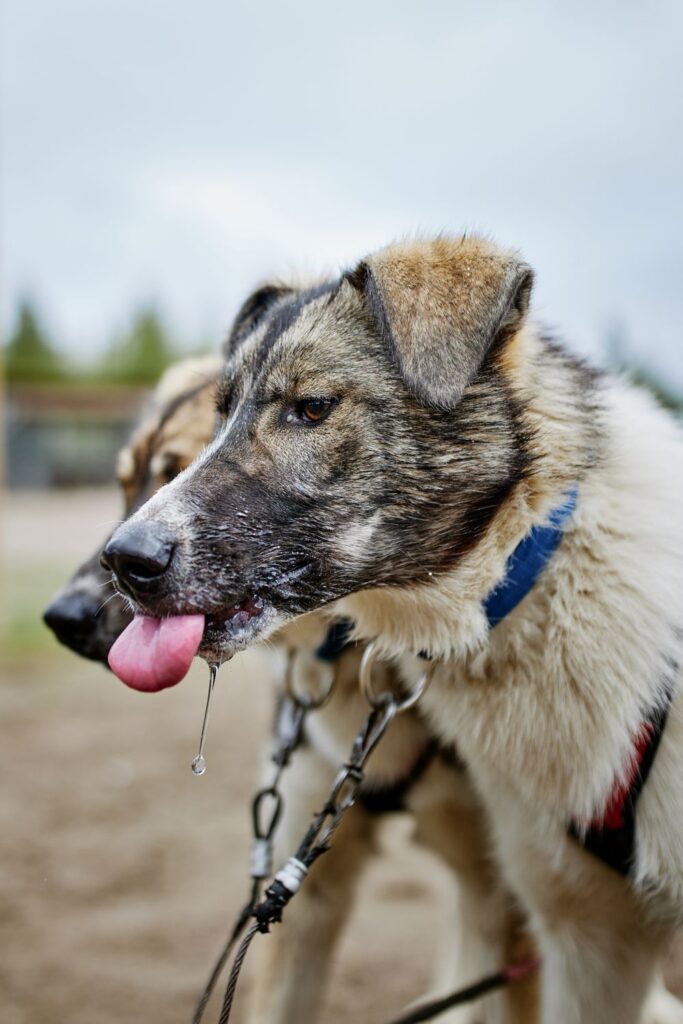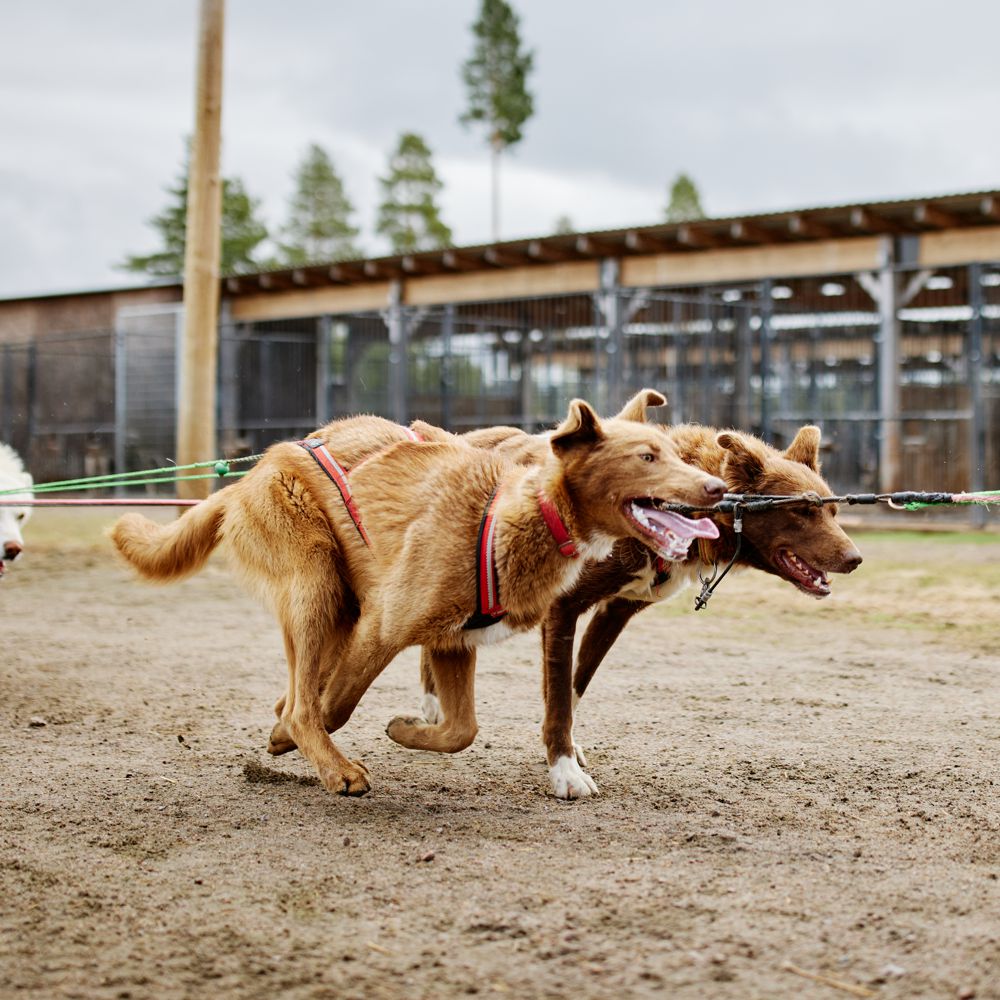Are They Huskies? Understanding the Alaskan Husky
A question we get asked all the time is:
“Are they huskies?”
We get why people ask.
They come to the kennel, expecting to see the classic image of the Siberian husky with their thick coat, bright blue eyes, and that textbook wolf-like appearance. Then they see our dogs, and confusion may start to set in. Yes, they are huskies, but not in the way that most people expect. These are Alaskan Huskies.
Now, this is where it gets a bit tricky for people, especially when we say, “Yes, they’re huskies, but they’re not purebred.” That tends to throw people for a loop. They assume that if it’s not a purebred, that they must be some kind of artificial mix. Like we stirred up a lab experiment with a German Short-haired Pointer, a Siberian Husky, a dash of Labrador, and called it a day.
However, that’s not how it works. Alaskan Huskies aren’t a breed, in the kennel club sense, but that doesn’t mean that they’re mixed breeds, either. It’s much more nuanced than that and to explain it properly we need to dive into a bit of the history of this breed.
Let’s start with the word “husky” itself. According to the dictionary definition, a husky a type of dog used in the polar regions, primarily and specifically for work as sled dogs. That’s it. No mention of blue eyes or pointy ears. Just a job description and some geography.
The term “husky” came from North America. When European settlers encountered the Indigenous peoples of the north, they also noticed their sled dogs. The locals referred to these northern tribes and their dogs with a term that sounded like “Husky,” and it stuck. So this is a North American term for North American dogs, not Siberian ones.
The Alaskan Husky, then, is the sled dog of Alaska; but the dog you see today looks nothing like the Alaskan Huskies of 500 years ago. Back then, they were more like what we think of now as Alaskan Malamutes – big, hairy, and powerful. These dogs are built to haul heavy loads and to survive brutal conditions.

These dogs lived and worked alongside Indigenous communities in remote villages, where generations of selective breeding were guided by deep understanding and practical needs. Rather than formal kennel clubs or written pedigrees, breeding choices were based on real-world performance: only the dogs that could endure the harsh climate, pull heavy loads efficiently, and work well in teams were chosen to pass on their traits. This was not random or accidental, but rather a form of natural selection shaped by human hands, with the environment and the people together determining what made a great sled dog.
Then the gold rush hit. Suddenly, there weren’t enough sled dogs to meet demand. Dogs from outside of Alaska were brought in legally, illegally, and pretty much any way possible. In fact, Jack London’s Call of the Wild is based on this exact situation: strong dogs stolen from other parts of the U.S. and sent north.
These new dogs mixed with the native stock, and once again, nature selected. The unfit dogs didn’t survive, but the gene pool diversified and the dogs started to change. Some had different colors, some had floppy ears, but the core traits of strength and endurance remained.
Then, as modern transport took over, sled dogs started to disappear. Snowmobiles, planes, and cars made them obsolete. But as working dogs faded, racing dogs started to take over. Because no matter where in the world you are, if people own something that moves, they want to race it.
That’s when the Alaskan Husky started changing again. Now, the goal wasn’t to haul weight, but to go fast. And suddenly, a big, hairy 45-kilo dog wasn’t an asset anymore. The fast, lean, athletic dogs started winning races. And those were the ones people bred.
These newer, faster Alaskans were influenced by imported Siberian Huskies and other breeds too. But again, just because something was mixed into the line doesn’t mean it became a mixed breed. Only the dogs that could race well stuck around.
Over generations, Alaskan Huskies became what they are today: the world’s top-performing long-distance sled dogs. And though they don’t belong to a kennel club, they are very much a distinct, consistent population.

So what’s a breed, then? Well, from a biological standpoint, a breed is a population of animals that reliably passes on specific traits. If you breed two Alaskan Huskies, their puppies will look and behave like Alaskan Huskies. That’s what matters.
Purebreds, as defined by kennel clubs, are a different story. There, it’s all about paperwork, closed studbooks, and committees deciding what counts as “correct.” In our opinion, a lot of that ends up being about aesthetics, not function. You won’t see a kennel club board member at the start line of a 500-kilometre race testing which dog team is the toughest.
Alaskan Huskies are not purebred. They’re better than that. They’re functional. They’re bred for grit, speed, endurance, appetite, recovery time, foot health, coat quality—the things that actually matter when your job is to run across frozen wilderness.
And sure, they come in all shapes and colours. Some have upright ears, some floppy. Some are black, white, brown, or patchy. No one cares. Because no one is breeding for looks. We’re breeding for dogs that love to run and can do it better than anyone else.
So are they huskies? Absolutely. They are Alaskan Huskies: the result of generations of working knowledge, shaped by need, performance, and love for the trail. They’re not mixed breeds, and they’re not kennel club trophy dogs. They’re exactly what a husky should be.
And we’ll always stand by that.
Resources & Further Information
- Suomen Koiravaljakko Yrittäjät (Finnish only)
- Alaskan Sled Dogs: The Genetics and Selection of Elite Canine Athletes – Canine Health Summit 2022 (YouTube)
6 June 2025, 20:19 – This article has been updated to clarify the origins of the breed and breeding practices.



